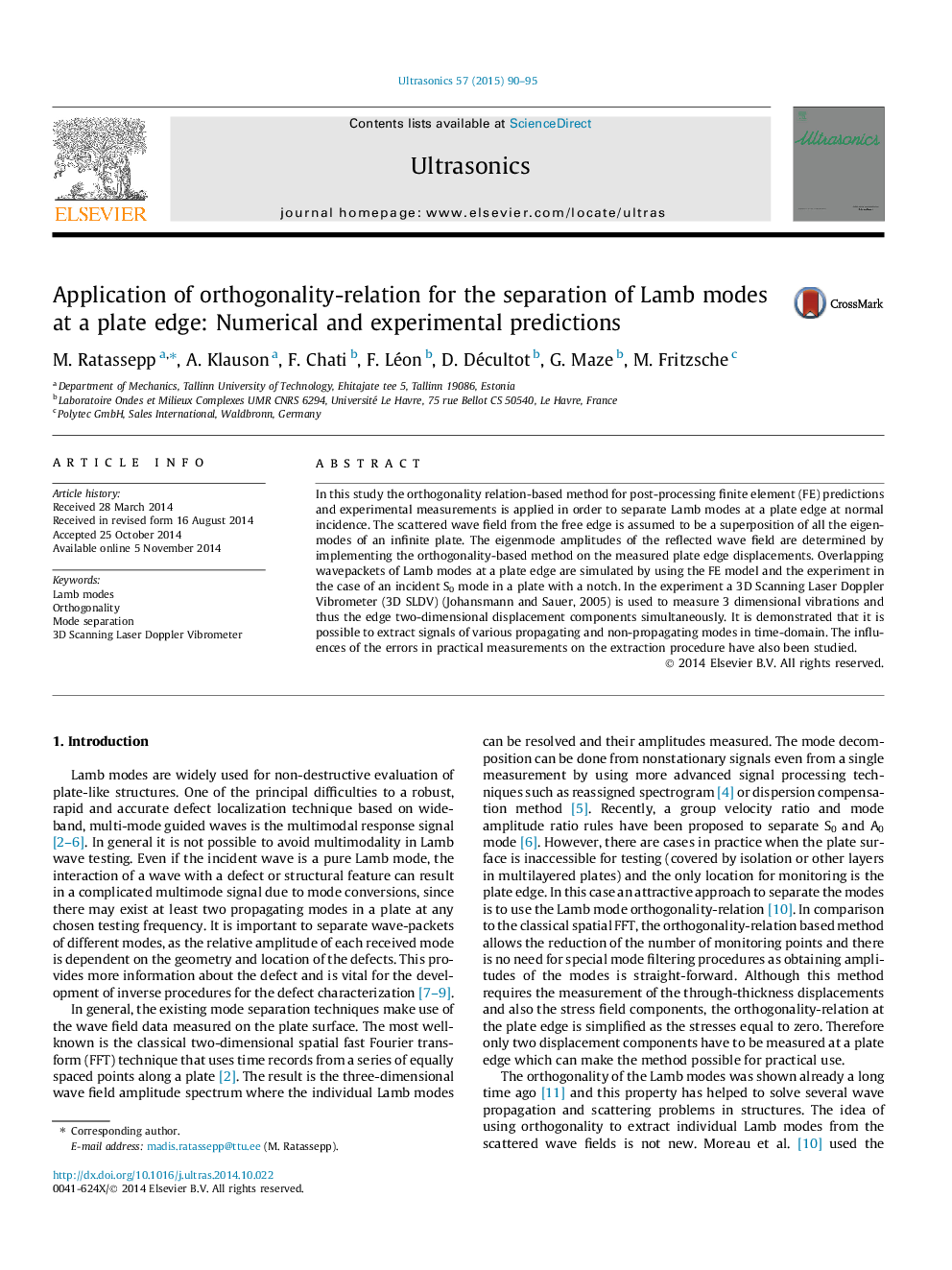| Article ID | Journal | Published Year | Pages | File Type |
|---|---|---|---|---|
| 1758789 | Ultrasonics | 2015 | 6 Pages |
•An orthogonality-relation based method is applied to separate Lamb modes from signals.•Finite element simulations and experiments were performed to validate the proposed idea.•3D Scanning Laser Doppler Vibrometer is used to measure edge 2D displacements simultaneously.•The technique is robust against errors in displacement amplitudes and material input parameters.
In this study the orthogonality relation-based method for post-processing finite element (FE) predictions and experimental measurements is applied in order to separate Lamb modes at a plate edge at normal incidence. The scattered wave field from the free edge is assumed to be a superposition of all the eigenmodes of an infinite plate. The eigenmode amplitudes of the reflected wave field are determined by implementing the orthogonality-based method on the measured plate edge displacements. Overlapping wavepackets of Lamb modes at a plate edge are simulated by using the FE model and the experiment in the case of an incident S0 mode in a plate with a notch. In the experiment a 3D Scanning Laser Doppler Vibrometer (3D SLDV) (Johansmann and Sauer, 2005) is used to measure 3 dimensional vibrations and thus the edge two-dimensional displacement components simultaneously. It is demonstrated that it is possible to extract signals of various propagating and non-propagating modes in time-domain. The influences of the errors in practical measurements on the extraction procedure have also been studied.
